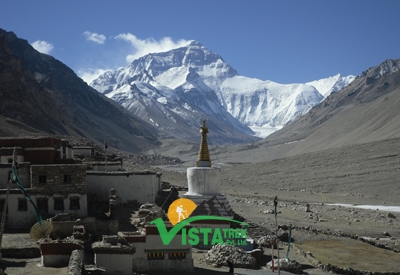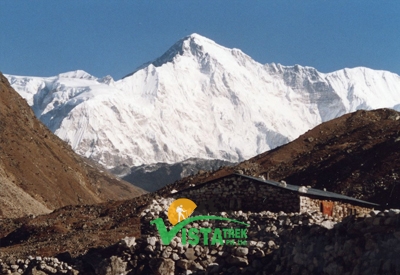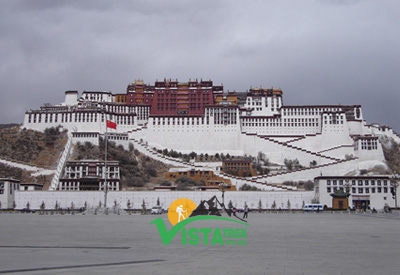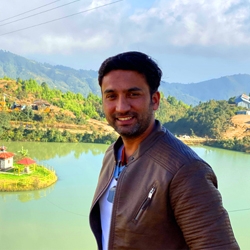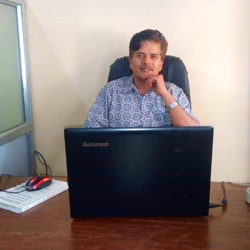Trip Facts
- Duration 12 Days
- Start FromKathmandu, Nepal
- Group Size1-10 Pax
- End FromKathmandu
- Trip GradeEasy to Moderate
- Max Height 5200 m
- AccommodationHotels, Guesthouses
- TransportationCar, Plane, Helicopter
Best Season
Spring (April to June) and Autumn (September to November)
Trip Highlights
- Journey through two beautiful Himalayan nations: Nepal and Tibet
- Visit iconic landmarks like Potala Palace, Jokhang Temple, and Swayambhunath Stupa
- Stand in awe at the base of the world’s highest peak – Everest (North Face)
- Explore ancient Tibetan monasteries like Rongbuk and Tashilhunpo
- Scenic drive through the Himalayan landscape via Gyirong Pass, Shigatse, and Yamdrok Lake
- Cultural immersion in both Tibetan and Nepali ways of life
Trip Overview
Are you ready to explore the mighty Himalayas from both sides? The Nepal & Tibet EBC Tour is a unique 10-day adventure that blends the mystical beauty of Tibet with the cultural richness of Nepal. This overland journey takes you from the bustling Kathmandu to the spiritual heights of Lhasa, with an exciting stop at the North Everest Base Camp.
This journey has something for everyone, whether you love the mountains, are a cultural adventurer, or are looking for spiritual tranquillity. The drive itself is a delight, passing through high hills, turquoise lakes, and secluded mountain communities. Along the route, you’ll learn about local traditions, sacred rituals, and the lifestyle of Himalayan nomads.
This EBC and Lhasa itinerary from Nepal is ideal for those looking to go beyond trekking and go on an intensive journey through the heart of the Himalayas.
Trip Itinerary
Upon your arrival at Tribhuvan International Airport in Kathmandu, a friendly representative from Vista Treks will be waiting to welcome you. After a short transfer to your hotel, you’ll check in and enjoy a refreshing welcome drink. Later, visit the Vista Treks office for a trip briefing, passport collection, and once you arrive at Tribhuvan International Airport in Kathmandu, a friendly representative from Vista Treks will be there to receive you. You'll be transferred to your hotel in a private vehicle, where you can check in and relax with a welcome refreshment. Later, you'll visit the Vista Treks office to go over your tour itinerary, hand over your passport for permit processing, and settle any remaining dues. If time permits, you can take a light stroll through Thamel—a lively area filled with shops, cafes, and colorful local life.
After breakfast, you'll embark on a guided cultural tour of Kathmandu's UNESCO World Heritage Sites. The day begins with a visit to Swoyambhunath, also known as the Monkey Temple, perched on a hill with panoramic views of the valley. Next, explore the historic Kathmandu Durbar Square, which reflects Nepal’s ancient royal heritage, though some parts were damaged during the 2015 earthquake. You'll then visit Pashupatinath Temple, one of the holiest Hindu temples, and observe cremation ceremonies along the Bagmati River. The day ends with a visit to Boudhanath Stupa, one of the largest and most serene stupas in Asia. Overnight at your hotel in Kathmandu
Enjoy a scenic and thrilling flight across the mighty Himalayas to reach Lhasa, Tibet. On a clear day, you might catch a glimpse of Everest from the air. Upon landing, you'll be transferred to your hotel in Lhasa. Since you’ll be at a much higher altitude, it’s important to rest and allow your body to adjust. Take it easy for the rest of the day and drink plenty of fluids. Overnight in Lhasa with breakfast included.
Over the next two days, you'll explore the spiritual heart of Tibet. Visit the sacred Jokhang Temple, a pilgrimage site filled with devoted Tibetan Buddhists. Wander through Barkhor Bazaar, a traditional marketplace bustling with monks, pilgrims, and local vendors. You’ll also visit the magnificent Potala Palace, once the winter residence of the Dalai Lama, perched high above the city. The tour also includes the impressive monastic universities of Sera and Drepung, where you can witness debates and learn about Tibetan Buddhist teachings. Overnight stays in Lhasa.
Today you’ll travel through the beautiful Tibetan plateau, heading toward Shigatse. Along the way, stop at Yamdrok Tso Lake, a turquoise freshwater lake surrounded by snow-capped peaks. Then explore Gyantse, a small historic town known for the Phalkhor Monastery and the unique Khumbum Stupa. Continue your drive to Shigatse, the second-largest city in Tibet. Overnight at a hotel in Shigatse.
The drive today takes you to Rongbuk, via Shegar, through some of the most dramatic mountain landscapes. The road can be bumpy at times, but the surrounding scenery—ranging from sweeping plateaus to views of towering peaks—makes it worthwhile. As you approach Rongbuk, you get closer to the base of the mighty Mount Everest. Overnight at a guesthouse near Rongbuk Monastery, the highest monastery in the world.
Early in the morning, set off on a short hike to the Everest Base Camp (EBC), located at an elevation of around 5,200 meters. The hike takes a couple of hours and offers breathtaking views of the north face of Mount Everest. For those who may find the hike difficult, horse carts are available. Spend some time exploring and soaking in the spiritual energy of this iconic place. Afterward, return to Rongbuk and drive back toward Shigatse, possibly stopping overnight at Shegar or continuing to Shigatse depending on time and conditions.
In the morning, visit the Tashilhunpo Monastery, the traditional seat of the Panchen Lama, known for its massive golden Buddha statue and impressive architecture. Then begin your scenic drive back to Lhasa, passing through beautiful Tibetan villages and mountain passes. Overnight at your hotel in Lhasa.
Fly from Lhasa back to Kathmandu, enjoying one last view of the Himalayas from above. Upon arrival in Kathmandu, you'll be picked up and transferred to your hotel. The rest of the day is free to relax, shop for souvenirs, or explore more of the city. Overnight stay in Kathmandu.
After breakfast, take a short drive to Nagarkot, a scenic hill station known for its stunning Himalayan views. On clear days, you can see several major peaks including Manaslu, Ganesh Himal, Langtang, Gauri Shankar, and even Everest in the far distance. Later, drive to Bhaktapur Durbar Square—an ancient royal city filled with exquisite temples, courtyards, and traditional architecture. Explore landmarks like the Dattatreya Temple, Nyatapola (a five-story pagoda), and the Bhairav Temple before returning to Kathmandu. Overnight at the hotel.
Depending on your flight schedule, you’ll be transferred to the airport in time for your departure. If your flight is later in the day, you’re free to enjoy some last-minute shopping or relaxing until it’s time to head to Tribhuvan International Airport for your journey home.
Cost Includes
- All ground transportation in Nepal and Tibet
- Accommodation in hotels/guesthouses
- Tibetan and Nepali guides throughout the trip
- Tibet Travel Permit and Chinese group visa
- Everest Base Camp entry permits
- All sightseeing with entry fees
- Budget Hotel accommodation ( Private single room) , with breakfast included in Tibet.
- All taxes and our service charge.
Cost Excludes
- Lunch and dinner while traveling in Nepal and Tibet
- International airfare
- Nepal visa fees
- Lunch & dinner in Kathmandu and Lhasa
- Personal expenses, tips, and travel insurance
- Any unforeseen cost due to political unrest, weather, or health conditions
- Tips to the staff and the driver.
Useful Info
Altitude Sickness: Proper Acclimatisation is Vital
When traveling to high-altitude destinations like Tibet or the Everest Base Camp (EBC), your body needs time to adjust to lower oxygen levels. Rapid ascent can lead to Altitude Sickness (Acute Mountain Sickness or AMS), causing headaches, nausea, dizziness, or worse.
Tips to prevent AMS:
- Ascend slowly; don’t gain more than 500 meters in elevation per day once above 2,500 meters.
- Stay hydrated—drink 3–4 liters of water daily.
- Avoid alcohol and smoking during the ascent.
- Include rest days in your itinerary.
- If symptoms persist, descend immediately and seek medical help.
Group Visa Required: No Individual Entry to Tibet
Tibet has strict entry regulations, and travelers must enter as part of an organized group with a special Tibet Travel Permit. Individual visas are not accepted for Tibet, even if you have a Chinese visa.
Requirements:
- Apply through a registered tour operator.
- Travel must be pre-arranged, including itinerary, guide, and vehicle.
The group visa is issued from the Chinese Embassy in Kathmandu (if entering from Nepal).
This rule ensures controlled and responsible tourism in the politically sensitive region.
Travel Insurance: High-Altitude Coverage is a Must
Standard travel insurance won’t cut it for Tibet or EBC. You’ll need a comprehensive policy that includes high-altitude trekking (above 4,000 meters), emergency evacuation, and medical care.
What to check in your insurance:
- Coverage for trekking or travel above specific elevations.
- Helicopter evacuation (in case of AMS or injury).
- Trip cancellation, delays, or baggage loss.
Make sure to read the fine print or consult your insurer before you leave.
Currency: Know What to Carry Where
In Nepal, the official currency is the Nepalese Rupee (NPR). In Tibet, you’ll need Chinese Yuan (CNY or RMB).
Currency Tips:
- ATMs are available in Kathmandu and Lhasa but not in remote trekking areas.
- Carry some cash, especially in small denominations, for local purchases.
- Money exchange is available at Kathmandu, Lhasa, and border towns.
- Credit cards may not be widely accepted in rural areas.
Language: English Guides Available, but Learn Local Greetings
While most trekking and tour agencies provide English-speaking guides, it’s respectful and useful to know a few basic phrases in Tibetan and Nepali.
Useful greetings:
- Nepali: “Namaste” (Hello), “Dhanyabad” (Thank you)
- Tibetan: “Tashi Delek” (Hello/Good Luck)
Using local greetings helps build connections and shows cultural appreciation.
Connectivity: The Internet is Limited in Remote Areas
In major cities like Kathmandu or Lhasa, you’ll find internet access in hotels and cafés. But once you’re on the road or trekking, connectivity drops significantly.
Stay connected with these tips:
- Buy a local SIM card (Ncell in Nepal, China Mobile in Tibet).
- Download offline maps and translation apps before you leave.
- Let family and friends know about possible blackouts in communication.
- Power banks and solar chargers are recommended for charging devices.
Best Time to Visit: Choose the Right Season
Spring (April to June)
- Why it’s great: Clear blue skies, excellent mountain visibility, and pleasant daytime temperatures.
- Perfect for: Photography, overland journeys from Nepal to Tibet, and viewing Mount Everest.
- Bonus: Rhododendrons bloom in lower altitudes during April and May.
Autumn (September to November)
- Why it’s ideal: Dry weather, stable conditions, and warm days with cool nights.
- Perfect for: Long-distance treks and road trips; fewer landslides and clear skies.
- Highlight: The most popular season due to excellent weather and festival atmosphere in Nepal.
Avoid Winter (December to February)
- Why not: Temperatures drop drastically, snow can block roads and high passes, and many remote lodges close.
- Risks: Harsh winds, icy trails, limited transport, and extremely cold nights.
Trip FAQ's
Yes, a Tibet Travel Permit and a group Chinese visa are mandatory. These are arranged by your tour operator.
While there is no trekking involved, high altitude and long driving days can be physically demanding.
No, Tibet requires travellers to be in an organised group tour with permits arranged in advance.
Standard 2-3 star hotels in cities; simple guesthouses in remote areas like Rongbuk and Tingri.
Yes, consult your doctor and carry Diamox or similar AMS-preventing medicines.
4WD Land Cruisers or tourist-standard vehicles, depending on group size and route conditions.




